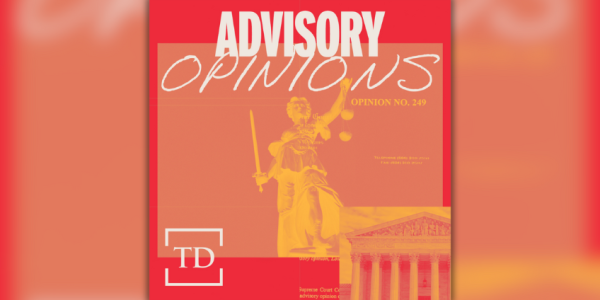For months, the British press has been filled with alarming accounts of long waits for medical attention among National Health Service (NHS) patients facing life-threatening conditions and emergencies. While wintertime hospital crowding is not unusual, the steep deterioration in the system’s overall performance over recent months is unprecedented and points to something more serious and fundamental than a bad flu season. So too, do surveys that show the British public is more dissatisfied than it has been in decades with the quality and accessibility of the NHS.
Charting a way out of the current crisis is something only the elected leaders of the U.K. can do, but identifying what has gone wrong is a matter of interest outside of the country too, as the NHS has been held up for years as a model to study and possibly emulate. In the U.S., where there is still an active debate over the relative merits of the government and the market in health care, growing unease with the fully public system of a close Western ally is noteworthy.
Making sense of the NHS’s challenges requires some understanding of its origins and evolution. The current crisis, as well as the many less intense episodes of impaired access to services that have occurred in previous years, are not unrelated to how it all began.
Labour’s NHS.
The U.K. moved decisively toward adopting a national health system in the years preceding and during World War II, a time of growing public support for expansion of the welfare states of Western governments. The historic Atlantic Charter, which cemented the planned postwar alliance between the U.S. and U.K., mentions adoption of “social security”—social support broadly understood—as a shared global objective.
Two seminal government reports during World War II provided crucial momentum for a British national health system. In 1942, Prime Minister Winston Churchill’s coalition government published an expansive review of social insurance options, written by Britain’s leading expert on the subject, William Beveridge. The Beveridge report, as it came to be known, provided the template for the postwar British welfare state.
In 1944, Conservative MP and Minister of Health Henry Willink authored a second study examining in more detail what would be required to provide access to medical services for the entire British population. It quickly became an unlikely bestseller in a population hungry to think ahead to life after the war.
While the national debate over a possible NHS had been largely nonpartisan to this point, the Labour Party’s landslide election in July 1945 brought an end to that.
A pivotal figure in those years was Aneurin Bevan, who served as postwar Prime Minister Clement Attlee’s minister of health. Bevan was a former coal miner from Wales with socialist instincts. He wanted an NHS run as a free public service for all citizens, in much the same way that public education comes with no direct charges to its users.
Bevan’s vision for the original NHS carried the day and led to three pivotal decisions.
First, free care at the point of service was a foundational principle (with the minor exception of some prescription drug cost-sharing in NHS England). The absence of patient cost-sharing, and the attendant hassle collecting such payments entails, are important reasons the NHS is so beloved by British voters. They have the right to cradle-to-grave medical care without ever receiving a bill for the services they use.
However, with no cost-sharing by patients, demand is regulated partly through restrictions (directly and indirectly) on the supply of services, which means patients often must wait weeks and sometimes months before receiving non-emergency care.
Second, Bevan did not want the NHS funded by premiums or anything resembling mandatory contributions, a common feature of the nationalized systems in Europe. Instead, the NHS receives its budget directly from Parliament, in competition with other public services.
Third, Labour’s decision to nationalize the hospital industry placed the government squarely in the position of not only paying for medical services but managing their delivery. This, too, sets the NHS apart from many other Western governments that have national health insurance programs that pay for services from networks managed in the private sector (albeit often with a non-profit requirement).
The strong Labour Party imprint on the initial NHS design, especially the decision to take over running the hospital system, had the predictable effect of pushing the Conservatives into opposing the original NHS law, which Parliament approved in 1946. This partisan split has had lasting effects on British politics. Labour sees the NHS as its most important achievement, while Conservatives must regularly demonstrate their loyalty to the health system to fend off attacks. The result has been general acceptance of the NHS as originally conceived and relatively modest differences in emphasis on how to improve it.
Eroding access to care.
What is most troubling about the NHS today is that the government has been providing it with substantial added resources in recent years—planned funding for 2023-24 will be at least 35 percent above what it was a decade earlier after accounting for inflation—and yet plunging productivity is leading to longer waits for care.
A closely watched metric is the size of the waiting list for hospital-based procedures, which are services that patients need but which are not emergencies and therefore can be scheduled. As of September 2015, there were 3.3 million people on the NHS England’s hospital waiting list, which was considered far too high at the time. The list now stands at 7.2 million—about 12 percent of the population. Many patients with painful conditions are now forced to wait many months and sometimes more than a year to receive care.
Hospital emergency rooms are also hopelessly overcrowded, which is forcing many patients to stay in ambulances until spaces open up or to wait at home longer before going to the hospital. In mid-2012, 5 percent of emergency room patients had to wait more than four hours before receiving attention. In mid-2022, 42.7 percent of all patients were forced to wait for at least that long before they received any care, and some patients now wait many hours longer than that.
The impaired access to emergency services has real consequences: Official measures of mortality indicate that the NHS’s shortcomings are contributing to higher than normal death rates, with perhaps as many as 500 “excess” deaths occurring every week.
The cause is not insufficient staffing. As of November 2022, there were nearly 128,000 physicians working in NHS England’s hospitals, which is 35 percent above the number employed in 2010. The increase in nurses has been similarly dramatic.
The hard reality is that the NHS is now delivering far fewer services for every pound it receives than it was before the COVID-19 pandemic. Compared to 2019, outpatient appointments are down 13.8 percent. More resources can help, but the NHS will continue to struggle if the dramatic decline in productivity is not halted and reversed.
The reform pendulum.
The major parties have offered competing plans for improving the system’s performance. In general terms, the Conservatives have stressed using competition within the NHS to improve productivity, while Labour favors more funding, better planning, and exacting management. Neither approach has led to fully satisfactory results.
The modern era of NHS reform began, as with so much else in recent British political history, with the premiership of Margaret Thatcher. It is a testament to the political potency of the NHS that Thatcher never pushed for full privatization or denationalization of NHS hospitals even as she denationalized several other industries. Instead, she searched for a way to bring more discipline to the NHS so that its performance would improve as a matter of institutional design and not only in response to episodic political pressures.
Her thinking on the NHS was influenced by Alain Enthoven, a U.S. economist who championed “managed competition” for American health care. For the U.K., he recommended introducing an internal market within the NHS, by splitting the procurement and the delivery of services into separate subunits. The hope was that competition for resources within the NHS would allow patients to gravitate to the higher performers.
The internal market concept never sat well with NHS advocates or the Labour Party, and was set aside when Tony Blair was swept into power in the 1997 general election. His government favored cooperation among providers when planning budgets, although the internal split between the NHS’s two main functions was retained. Blair also pushed to increase the NHS budget so that it was more closely aligned with spending in Europe.
When Labour lost the 2010 general election in 2010, the coalition government that took over was led by Conservative Prime Minister David Cameron, and it favored moving back toward the internal market focus of the Thatcher era. Funding continued to rise but at rates below that which had occurred during the Blair-Gordon Brown era.
After the Brexit vote, the Conservative governments of Prime Ministers Teresa May, Boris Johnson, and Rishi Sunak have steered toward a non-ideological posture on improving the NHS. They each have pushed for more funding and management adjustments intended to encourage greater productivity mainly through more autonomy and decentralization.
Their strategies have not worked, as the NHS has fallen into the worst crisis since before the Thatcher premiership. With a general election coming sometime before early 2025, the Conservatives have the most to fear from an electorate that is justifiably frustrated with the inability of the government to make urgent medical attention something that can be taken for granted in an emergency.
Public control in context.
NHS advocates contend that there is nothing inherently wrong with the U.K.’s health service that would not be fixed with appropriate levels of funding and political support, which are conditions they believe are met when Labour is in power.
One reason that Labour sometimes loses elections is that, while voters want inexpensive and accessible medical care, they also want low taxes. A well-designed health system should be resilient enough to function well even as control of the government occasionally shifts between and among competing parties.
Running the NHS is also a particularly difficult assignment for the U.K. government no matter which party is in charge because of the complexity of providing high-quality, and ever-changing, medical services to a diverse population of more than 60 million.
The scale of the enterprise is itself an indicator of the challenge. In 2019, there were 1.5 million NHS employees, which placed it fifth on the list of the world’s largest employers (one and two were the US Department of Defense and China’s People’s Liberation Army, respectively). U.K. political leaders are ultimately responsible for setting the salaries and pay levels of this immense workforce. A major contributing factor to the current turmoil has been a series of strikes by doctors, nurses, and ambulance drivers, with the government sitting on the opposite side of the negotiation table. These are matters that are handled mostly by private institutions in other countries.
Further, government control can hinder the steady flow of needed capital investments, as the returns from such spending often occur on timeframes that do not match with the electoral cycles of the officials who are held accountable by voters for the NHS’s performance.
No easy answers.
The NHS’s unusually high level of public control compared with other nationalized health systems means that very little can happen within the NHS that is not the direct result of a decision taken by the bureaucracy overseeing it or the elected officials who approve its budget. And this is how it has been for three-quarters of a century.
Put more pointedly, if the NHS is not meeting the expectations of its users (and it clearly is not at the moment), the blame lies squarely with the government that has had full control over it for decades.
Even so, British voters are not likely to respond to the current crisis with a new openness to far-reaching reform. They remain committed to the NHS as it was originally constituted, and especially to the ideal of free care at the point of service.
The pressure then is on the Conservatives who now hold power. It is up to them to find a formula that retains the NHS’s founding principles and yet also embeds within it incentives for continuous productivity and quality improvement. Their fortunes in the next election may hinge on what they come up with.








Please note that we at The Dispatch hold ourselves, our work, and our commenters to a higher standard than other places on the internet. We welcome comments that foster genuine debate or discussion—including comments critical of us or our work—but responses that include ad hominem attacks on fellow Dispatch members or are intended to stoke fear and anger may be moderated.
You are currently using a limited time guest pass and do not have access to commenting. Consider subscribing to join the conversation.
With your membership, you only have the ability to comment on The Morning Dispatch articles. Consider upgrading to join the conversation everywhere.